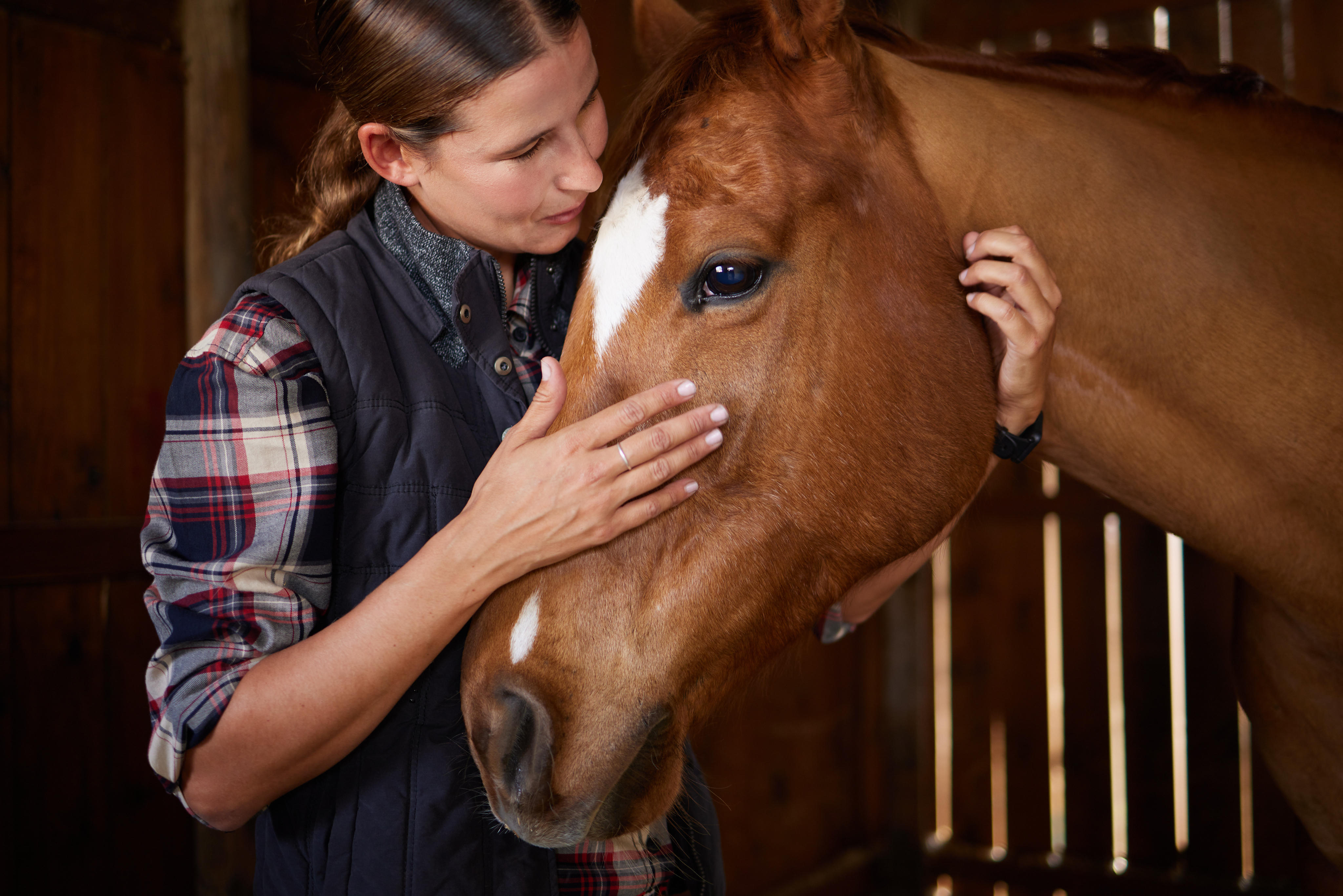BRAVECTO® Clinical Studies
Published Clinical Studies
View and download recent clinical studies to stay up-to-date and educated on the proven difference of BRAVECTO.
Efficacy of fluralaner chewable tablets (Bravecto®) against Asian longhorned tick (Haemaphysalis longicornis) infestations of dogs
Abstract Background: The parthenogenic reproductive ability of Haemaphysalis longicornis, facilitating quick life cycle completion and rapid geographic spread and its pathogen vector potential make infestations a risk to human and canine health. Two 90-day studies were initiated to evaluate the efficacy of a single fluralaner administration for the treatment and prevention of H. longicornis infestations on dogs. Methods: Dogs were randomly assigned (10 dogs/group) to either an untreated control group or a group treated once (Day 0) with 13.64% w/w fluralaner chewable tablets (Bravecto®) at the minimum label dose rate of 25 mg/kg. Each dog was infested with approximately 50 H. longicornis ticks on Days -9 or -6 and on Days -2, 28, 58 and 88. A different US tick isolate was used in each study. Tick counts were completed on Days -7 or -4, 2, 30, 60 and 90. The primary efficacy criterion was a 90% reduction in arithmetic mean tick counts between the treated and control groups. For between-group comparisons at any assessment, at least six control dogs were required to retain at least 25% of the infestation dose (13 live ticks). Results: Pre-study infestations demonstrated susceptibility of all study dogs to challenge with H. longicornis. At each subsequent assessment in both studies, at least seven untreated control dogs retained ≥ 25% of the challenge, demonstrating adequate infestations for each efficacy calculation. On Days 2, 30, 60 and 90 the mean live tick infestation rate (number of ticks recovered from each dog/infesting challenge of each dog) of untreated control dogs ranged from 27.8 to 60.8%. No live ticks, free or attached, were found on any fluralaner-treated dog in either study. Between-group differences were statistically significant (P ≤ 0.0002) at each assessment. Conclusions: At the minimum recommended label dose rate of 25 mg/kg, fluralaner chewable tablets were 100% effective in eliminating H. longicornis ticks from dogs infested at the time of treatment. Complete efficacy against both US isolates of this tick was maintained through 90 days following a single treatment. Therefore, fluralaner is a treatment of choice for protecting dogs against this invasive tick species. Keywords: Asian longhorned tick, Bravecto®, Dog, Efficacy, Fluralaner chewable, Haemaphysalis longicornis Read more about this study here
Efficacy of either orally administered fluralaner or topically administered imidacloprid/flumethrin for controlling Rhipicephalus sanguineus sensu lato premises infestations
Abstract Background: Adult, nymph, and larval Rhipicephalus sanguineus sensu lato infest dogs and thrive in premises including homes and kennels. Ticks emerge from hiding to seek and attach to dogs, engorge, then leave their hosts to hide then molt or oviposit. This study evaluated the effect of either external or systemic canine treatment on R. sanguineus s.l. populations in premises. Methods: Thirty-two dogs in eight kennels were divided into three groups; one group (eight dogs in two kennels) served as untreated controls; one group (12 dogs in three kennels) received oral fluralaner (25–56 mg/kg); and one group (12 dogs in three kennels) received topical flumethrin/imidacloprid impregnated collars. Treatments were administered once on day 0. Prior to treatment, R. sanguineus s.l. infestations were established in kennels holding dogs, by placing ticks every 2 weeks from day −84 through day −14. Kennel surfaces (walls and floors) were smooth except for uniform “hideouts” to permit precise off-host tick counting. Results: Control dog kennel mean tick counts (all life stages) increased from 737 ticks/kennel at day −7 to 2213 at day 63 when all control kennel dogs were acaricide-treated as a humane endpoint. Kennels housing dogs subsequently treated with systemic fluralaner had a mean of 637 counted ticks/kennel on study day −7 (7 days before treatment). One fluralaner treatment eliminated all premises ticks (100% reduction) by day 70, and these kennels remained tick-free through study completion (day 84). Kennels housing dogs subsequently treated with an external imidacloprid/flumethrin collar had a mean of 614 counted ticks/kennel at study day −7. Collar treatment reduced counts by 90% on day 63, with kennel tick counts climbing after this and ending the study with a 75% reduction. Systemic fluralaner treatment was significantly (P = 0.003) more effective at reducing engorged adult female tick counts than external imidacloprid/flumethrin treatment. Conclusions: Fluralaner treatment eliminated off-host R. sanguineus life stages in infested kennels by day 70 following treatment and was significantly more effective than imidacloprid/flumethrin collar treatment in reducing the premises population of engorged female ticks. Imidacloprid/flumethrin treatment did not eliminate premises tick populations, with populations increasing before the study end. Keywords: Acaricide, Dog, Rhipicephalus, Fluralaner, Flumethrin
Efficacy of a spot-on combination of fluralaner plus moxidectin (Bravecto® Plus) in cats following repeated experimental challenge with a field isolate of Ctenocephalides felis
Abstract Background: A spot-on formulation of fluralaner plus moxidectin has been designed to provide long-term protection against fleas and ticks, prevent heartworm disease and treat gastrointestinal nematode infections in cats. The objective of this study was to determine the efficacy of this product against fleas collected from a household with repeated fipronil failures following owner-administered treatments. Methods: Thirty cats were randomized to three equal groups: (A) untreated controls; (B) to receive a single application of fluralaner plus moxidectin (Bravecto® Plus) at 40 mg/kg and 2 mg/kg body weight, respectively; and (C) three applications at one month intervals with a spot-on formulation of fipronil and (S)-methoprene (Frontline® Plus) at 0.5 ml manufacturer recommended dose. Flea challenges were completed on Days −6 (for randomization), −1, 7, 14, 28, 42, 56, 70, 77, 84 and 91. Flea counts were completed 48 hours after initial treatment and 48 hours following each subsequent challenge. Results: Fleas were found on all control and all fipronil and (S)-methoprene treated cats at every assessment. From Day 2 to Day 93, all cats in the fluralaner plus moxidectin group were flea-free, with one exception (Day 58; three fleas counted on one cat); control group flea counts ranged between 34–109, and fipronil and (S)-methoprene group counts ranged between 1–79. At each assessment after Day 0, compared to the control group, geometric mean flea counts were significantly lower in the fipronil and (S)-methoprene group (P ≤ 0.04) and in the fluralaner plus moxidectin group (P < 0.001), and mean flea counts in the fluralaner plus moxidectin group were significantly lower than those of the fipronil and (S)-methoprene group (P < 0.001). The efficacy of fluralaner plus moxidectin, based on geometric means, was 100% at each assessment post-Day 0 except on Day 58 when efficacy was 99.7%. In the fipronil and (S)-methoprene group efficacy ranged between 30.6–65.6%. Conclusions: These findings demonstrate complete efficacy of fluralaner plus moxidectin against a flea isolate that was not controlled by fipronil and (S)-methoprene. This study provides confirmation of the consistent, sustained efficacy of topically applied fluralaner in the treatment and control of flea infestations in cats. Keywords: Bravecto, Cat, Ctenocephalides felis, Efficacy, Fipronil, Fleas, Fluralaner, Moxidecin, S-methoprene Read more about this study here
Duration of annual canine flea and tick protection provided by dog owners in Spain
Abstract Background: Doses of flea and tick medication acquired by dog owners over a 12 month period were determined from veterinary hospital transaction records in Spain. The number of months of flea and tick protection potentially obtained by dog owners prescribed fluralaner, a flea and tick medication with a 12 week re-dosing interval, was compared with months of flea and tick protection obtained by dog owners prescribed monthly oral or spot-on products. Prior studies in human and veterinary medicine have suggested that longer-acting medications benefit patients by providing improved adherence to provider recommendations. Results: Dog owners took home, on average, significantly more months of protection when they obtained the 12 week duration product fluralaner (4.3 months) than they did when they obtained other flea and tick products providing 1 month of protection [3.24 months (oral), 2.9 months (spot-on)]. Many dog owners (46–64%) obtained only one dose of flea and tick product each year, regardless of the duration of protection offered by the product. Significantly more dog owners obtained 7–12 months of protection when they were prescribed fluralaner (15.7%) by their veterinarians compared with dog owners prescribed monthly flea and tick products [6.8% (oral), 8.3% (spot-on)]. Conclusions: Veterinary prescription of fluralaner delivers more months of potential flea and tick protection as shown by dog owner acquisition of flea and tick medication. The use of a longer-acting medication requires the administration of fewer doses and may translate into better adherence to veterinary ectoparasite control recommendations. Keywords: Ectoparasiticide, Dog, Veterinary practice, Duration, Flea, Tick Read more about this study here
Dog owner flea/tick medication purchases in the USA
Abstract Background: Veterinary clinic transaction records from the USA were examined to determine dog owner purchase patterns for three prescription ectoparasiticides. In-clinic purchases of formulations of fluralaner (with 12-week duration per dose) were compared with dog owner purchases of afoxolaner and spinosad (both with 4 week duration per dose) in a population of 231,565 dogs over a 12 month period. Prior studies in human and animal medicine have suggested that patients more closely adhere to prescriber dosing recommendations when they receive a longer-duration medication. Results: Veterinary clinic transaction records were examined for the period June 2014 through March 2017 using records from approximately 650 veterinary clinics. Ectoparasiticide purchase patterns were compared for two products (afoxalaner and spinosad) with monthly dosing and one product (fluralaner) with an extended (12 week) dosing interval. The average dog owner who obtained fluralaner purchased significantly more months of flea/tick protection (5.7 months) over the 12-month study period than the average dog owner that selected either afoxolaner (4.6 months) or spinosad (3.3 months). The proportion of dog owners who obtained only one dose of ectoparasiticide per 12-month period was 42% for fluralaner, 30% for afoxolaner and 37% for spinosad. The proportion of dog owners who obtained 2 doses or less per 12-month period was 67% for fluralaner, 52% for afoxoalaner and 67% for spinosad. Owners that obtained fluralaner were significantly more likely to obtain 7.0–12.0 months of flea and tick protection and significantly less likely to purchase 1.0–6.9 months compared with dog owners who purchased afoxolaner or spinosad. Conclusions: Dog owners who obtained a flea and tick medication with a longer duration of action acquired significantly more months of protection in a year than dog owners who obtained shorter duration (1 month) products. Dog owners were better able to adhere to veterinary recommendations on ectoparasites control with a longer-acting flea/tick medication. Keywords: Ectoparasiticide, Dog, Veterinary practice, Purchase, Adherence, Duration, Flea, Tick Read more about this study here
Comparison of the initial and residual speed of Ixodes scapularis kill on dogs treated with a single dose of Bravecto® Chew (25 mg/kg fluralaner) or Simparica TRIO® (1.2 mg/kg sarolaner, 24 µg/kg moxidectin, 5 mg/kg pyrantel)
Abstract Background: Compliant ectoparasiticide product use is a comprehensive way to control ticks and reduce the risk of tick-borne pathogen transmission to dogs. Because the systemically acting isoxazoline ectoparasiticides require tick attachment for drug delivery, fast speed of kill is essential to minimize tick-borne pathogen transmission risk. Methods: Dogs of satisfactory tick-carrying capacity were randomly allocated to treatment groups and administered, per label instructions, Bravecto® Chews (minimum 25 mg/kg fluralaner), Simparica TRIO® (minimum 1.2 mg/kg sarolaner, 24 µg/kg moxidectin, 5 mg/kg pyrantel), or no treatment. Dogs were infested with approximately 50 unfed adult (35 female, 15 male) Ixodes scapularis on Day -2, 21 and 28. Live tick counts were performed at 4, 8, 12 and 24 h post-treatment (Day 0) and post-infestation on Day 21 and 28. Tick control efficacy was determined by comparing live tick means for each product-treated group to the untreated control group and each other at all time points using a linear mixed model. The percent of dogs free of live ticks was analyzed using the Fisher’s exact test for treatment group comparison. Results: The untreated control group maintained adequate tick infestations throughout the study. Using geometric means, an existing I. scapularis infestation was controlled by 99.7% and 93.0% 12 h post-treatment and by 100% and 99.5% 24 h post-treatment, for Bravecto® and Simparica TRIO®-treated dogs, respectively. Ixodes scapularis infestations were controlled more quickly for Bravecto®- compared to Simparica TRIO®-treated dogs on Day 21 at 8 h (efficacy 74.0% vs. 0.0%, p = 0.003) and 12 h (efficacy 99.2% vs. 39.4%, p < 0.001) post-infestation and Day 28 at 8 h (efficacy 92.2% vs. 0.0%, p < 0.001) and 12 h (efficacy 99.6% vs. 27.7%, p < 0.001) post-infestation. On Day 28 post-treatment, the efficacy of Bravecto® and Simparica TRIO® to control a new I. scapularis infestation was 100% and 96.6%, respectively, by 24 h post-infestation. Of product-treated dogs, 100% of Bravecto®-treated dogs were free of live ticks by 24 h post-treatment or post-infestation. No treatment-related adverse reactions occurred during the study. Findings: Few mild and transient clinical findings like erythema at the administration site and single incidences of salivation or vomiting were observed. All of which were consistent with the individual product leaflets. There were no findings suggesting an increased safety risk associated with the concurrent treatment of cats with fluralaner and emodepsid-praziquantel. Conclusions: Ixodes scapularis infestations are controlled more quickly 21 and 28 days post-treatment for dogs administered a single dose of Bravecto® compared to dogs administered a single dose of Simparica TRIO®. Keywords: Acaracide, Blacklegged tick, Canine, Deer tick, Ectoparasiticide, Isoxazoline, Prevention, Speed of kill, Tick, Tick control Read more about this study here
Comparative pharmacokinetics of fluralaner in dogs and cats following single topical or intravenous administration
Abstract Background: Bravecto™ Chewable Tablets for Dogs, containing fluralaner as active ingredient, is an innovative treatment for flea and tick infestations that provides safe, rapid and long acting efficacy after a single oral administration in dogs. Topically applied fluralaner provides similar safe, rapid and long acting efficacy, both in dogs and in cats. The pharmacokinetic profile of fluralaner was evaluated in dogs and in cats following either topical or intravenous administration. Methods: Twenty four dogs and 24 cats received three different topical doses, with the mid-dose based on the respective minimum recommended dose, and one intravenous dose. Plasma samples were collected for 112 days and fluralaner concentrations were quantified using a validated high performance liquid chromatography with tandem mass spectrometry (HPLC-MS/MS) method. Pharmacokinetic parameters were calculated using non-compartmental methods. Results: In dogs, fluralaner was readily absorbed from the topical administration site into the skin, subjacent tissues and blood. Fluralaner plasma concentrations showed an apparent plateau between ~ day 7 and 63, with individual tmax seen within this time period. After the plasma plateau, concentrations declined slowly and were quantifiable for more than 12 weeks. In cats, fluralaner was readily systemically absorbed from the topical administration site, reaching maximum concentrations (Cmax) in plasma between 3 and 21 days post administration, after which concentrations declined slowly, and were also quantifiable for more than 12 weeks. Systemic exposure, as shown by Cmax and the area under the concentration versus time curve from time 0 to the last measurable concentration (AUC(0→t)) increased proportionally with dose in both species. Following intravenous administration fluralaner showed a relatively high apparent volume of distribution (Vz), a low plasma clearance (Cl), a long terminal half-life (t1/2) and a long mean residence time (MRT); thereby demonstrating a long persistence of fluralaner in both species. Conclusions: The pharmacokinetic characteristics of fluralaner explain its prolonged activity against fleas and ticks on both dogs and cats after a single topical administration. Keywords: Fluralaner, Dog, Cat, Pharmacokinetics, Bravecto Spot-on Solution Read more about this study here
Assessment of dog owner adherence to veterinarians’ flea and tick prevention recommendations in the United States using a cross-sectional survey
Background: Adherence to a prescribed therapeutic regimen is a critical factor for achieving medication effectiveness and therefore treatment success. In the case of companion animal ectoparasite control, suboptimal owner adherence to medication recommendations is thought to be a common cause of treatment failure, and previous reports have found pet owners applying an average of 4.0–4.6 monthly flea and tick treatments per year to their dogs. This study investigated: US veterinary hospital self-reported flea and tick prevention recommendations; dog owner recollection of these recommendations; dog owner opinion on flea/tick recommendations and estimated owner flea and tick medication adherence based on veterinary hospital purchase records. Results: Veterinarians at 24 veterinary hospitals in 4 United States regions provided their flea and tick prevention recommendations. Five hundred fifty-nine dog owners, clients of the 24 hospitals, completed a survey evaluating their recollection of the hospitals’ recommendations and their opinions regarding required treatment frequency. Almost all veterinary hospitals in this study recommended 12 months of flea and tick prevention but only 62% of participating dog owners recalled this recommendation. The average owner response was that their dogs require 10.5 months of flea and tick prevention annually. Owner opinions were significantly different among U.S. regions with pet owners in the northeast U.S. believing that they needed significantly less canine flea and tick protection than pet owners in other parts of the United States. The estimated actual flea and tick prevention coverage was 6.1 months based on owner medication purchases over a 12-month period. Conclusions: In the United States, dog owner opinions and actions show that their flea and tick treatment adherence falls short of veterinarians’ recommendations. Keywords: Compliance, Adherence, Flea, Tick, Dog, Fluralaner, Ectoparasites Read more about this study here
Analysis of gaps in feline ectoparasiticide purchases from veterinary clinics in the United States
Abstract Background: The study objective was to examine cat owner ectoparasiticide purchases in the United States and estimate the impact of purchase gaps on timely ectoparasite protection administration. These purchase gaps lead to periods of time when cats are unprotected from ectoparasites. Methods: Ectoparasiticide purchase transactions for individual cats from 671 U.S. veterinary clinics from January 1, 2017 through June 30, 2019 were evaluated to determine time “gaps” between doses of ectoparasiticides purchased in a defined 12-month period. Ectoparasiticides examined were topically applied products that contained fluralaner, fipronil/(S)-methoprene/pyriproxyfen, imidacloprid/pyriproxyfen or selamectin as active ingredients. The duration of protection following administration of one dose was 8–12 weeks for the fluralaner-containing product and one month for the other products. Results: Ectoparasiticide purchase records were obtained from 114,853 cat owners and analysis found that most owners bought ≤ 6 months of protection during the year, with 61–75% (depending on the product) purchasing just 1–3 months of protection. The size of the average purchase gap was determined for all dose combinations out to 12 months of protection (5–7 doses for fluralaner and 12 doses for the other three products dosed monthly. The largest gaps occurred between the first and second doses and the second and third doses. Average purchase gaps for the four different products between doses 1 and 2 ranged from 11.2 to 13.9 weeks and between doses 2 and 3 ranged from 7.7 to 12.2 weeks. The fraction of purchases separated by gaps and the average length of the gap tended to decrease with increasing number of doses purchased. Owners purchasing the 8 to 12-week duration product containing fluralaner provided ectoparasite protection (“doses plus gap period”) for a larger proportion of each 2-dose period compared with owners purchasing products administered monthly. Conclusions: When cat owners purchase flea and tick medication, gaps between subsequent purchases reduces the proportion of time ectoparasite protection can be provided. The duration of the gap between doses has an impact on the effectiveness of flea/tick medication because it inserts a period without flea and tick protection between doses of flea and tick medication. The gaps between purchases were shorter and the period of ectoparasite protection was larger for owners purchasing a 12-week product than for owners purchasing a monthly product. Keywords: Adherence, Cat, Dosing gap, Ectoparasiticide, Doses plus gap period, Purchase Gap. Read more about this study here
Contact Us About the 12-Week* Difference
Contact us for more information about BRAVECTO for your clinic. We’ll answer any questions and help you start prescribing BRAVECTO for the dogs and cats in your care.
CONTACT USFor technical assistance or to report a suspected adverse drug reaction, contact Merck Animal Health at 1-800-224-5318.
This site is intended for veterinary professionals. Visit our website for pet owners.
*BRAVECTO kills fleas and prevents flea infestations. BRAVECTO (fluralaner) Chews for Dogs kills ticks (black-legged tick, American dog tick, brown dog tick, and Asian longhorned tick) for 12 weeks. BRAVECTO Chews also kills lone star ticks for 8 weeks. BRAVECTO (fluralaner topical solution) for Dogs kills ticks (black-legged tick, American dog tick, and brown dog tick) for 12 weeks and also kills lone star ticks for 8 weeks. BRAVECTO (fluralaner topical solution) for Cats kills ticks (black-legged tick and Asian longhorned tick) for 12 weeks and American dog ticks for 8 weeks.
Important Safety Information
BRAVECTO (fluralaner) Chews for Dogs: The most commonly reported adverse reactions include vomiting, lethargy, diarrhea, anorexia and pruritus. In some cases, adverse events have been reported following use in breeding females. BRAVECTO (fluralaner topical solution) for Dogs: The most commonly reported adverse reactions include vomiting, hair loss, diarrhea, lethargy, decreased appetite, and moist dermatitis/rash.
BRAVECTO Chews and Topical Solution for Dogs have not been shown to be effective for 12-weeks’ duration in puppies less than 6 months of age. BRAVECTO Chews and Topical Solution for Dogs are not effective against the lone star tick beyond 8 weeks of dosing. BRAVECTO Topical Solution for Dogs is for topical use only. Avoid oral ingestion.
BRAVECTO (fluralaner topical solution) for Cats: The most commonly reported adverse reactions include vomiting, itching, diarrhea, hair loss, decreased appetite, lethargy, and scabs/ulcerated lesions. BRAVECTO Topical Solution for Cats is not effective against American dog ticks beyond 8 weeks of dosing. BRAVECTO PLUS (fluralaner and moxidectin topical solution) for Cats: The most commonly reported adverse reactions include vomiting, hair loss, itching, diarrhea, lethargy, dry skin, elevated ALT, and hypersalivation. BRAVECTO PLUS has not been shown to be effective for 2 months in kittens less than 6 months of age. Use with caution in cats that are heartworm positive. The effectiveness of BRAVECTO PLUS to prevent heartworm disease after bathing or water immersion has not been evaluated.
BRAVECTO Topical Solution for Cats has not been shown to be effective for 12-weeks’ duration in puppies or kittens less than 6 months of age. BRAVECTO Topical Solution for Cats and BRAVECTO PLUS for Cats are for topical use only. Avoid oral ingestion. The safety of BRAVECTO Topical Solution for Cats and BRAVECTO PLUS has not been established in breeding, pregnant and lactating cats.
All BRAVECTO products contain fluralaner, which is a member of the isoxazoline class. This class has been associated with neurologic adverse reactions including tremors, ataxia, and seizures. Seizures have been reported in dogs receiving isoxazoline class drugs, even in dogs without a history of seizures. Use with caution in dogs with a history of seizures or neurologic disorders. Neurologic adverse reactions have been reported in cats receiving isoxazoline class drugs, even in cats without a history of neurologic disorders. Use with caution in cats with a history of neurologic disorders.




 Go To United States
Go To United States Algeria
Algeria Argentina
Argentina Australia
Australia Austria
Austria Bahrain
Bahrain Belgium (Dutch)
Belgium (Dutch) Brazil
Brazil Canada (English)
Canada (English) Chile
Chile Colombia
Colombia Croatia
Croatia Czech Republic
Czech Republic Denmark
Denmark Ecuador
Ecuador Egypt
Egypt Finland
Finland France
France Germany
Germany Greece
Greece Hungary
Hungary India
India Indonesia
Indonesia Iraq
Iraq Ireland
Ireland Israel
Israel Italy
Italy Japan
Japan Jordan
Jordan Kuwait
Kuwait Lebanon
Lebanon Malaysia
Malaysia Mexico
Mexico Morocco
Morocco Netherlands
Netherlands New Zealand
New Zealand Norway
Norway Oman
Oman Panama
Panama Peru
Peru Philippines
Philippines Poland
Poland Portugal
Portugal Qatar
Qatar Romania
Romania Russian Federation
Russian Federation Saudi Arabia
Saudi Arabia South Africa
South Africa South Korea
South Korea Spain
Spain Sweden
Sweden Switzerland (French)
Switzerland (French) Taiwan
Taiwan Thailand
Thailand Tunisia
Tunisia Turkey
Turkey Ukraine
Ukraine United Arab Emirates
United Arab Emirates United Kingdom
United Kingdom Uruguay
Uruguay Yemen
Yemen Global
Global